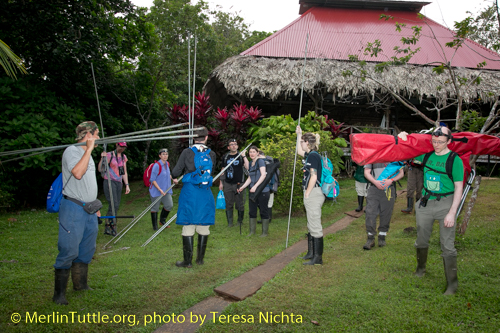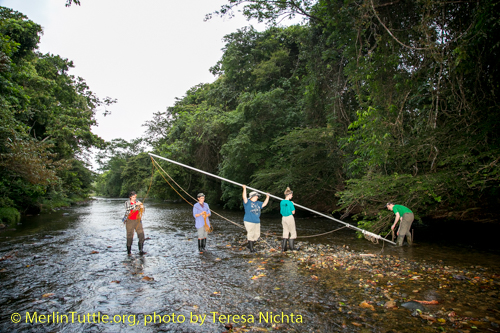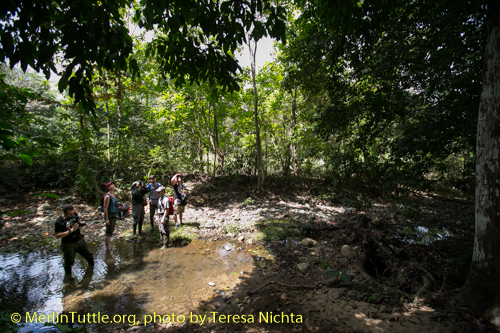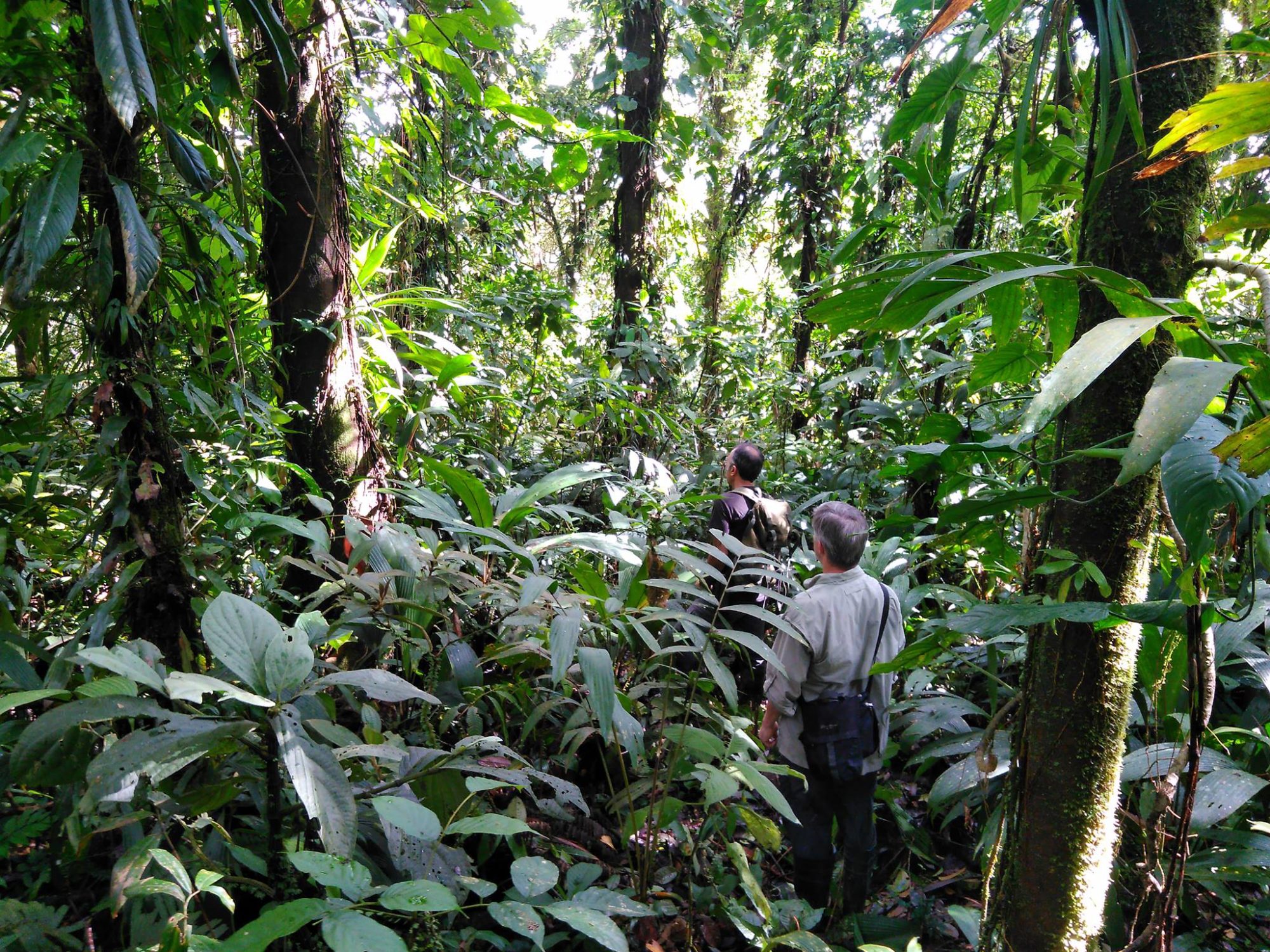Merlin Tuttle’s Bat Conservation Comes to Cocobolo (By Teresa Nichta)
We spent two-weeks at Panama’s Cocobolo Nature Reserve, to do a survey of bat species in this tropical hotspot while giving “in the field” workshops to our participants. Our survey results were impressive and unexpected, recording more than 600 bats of 53 species, more than half the total number known for the entire country. New species were netted nearly every night, including two on our final evening. The common vampire bats (Desmodus rotundus) and greater fishing bats (Noctilio leporinus) were participant favorites, though an incredible variety of fruit-, nectar-, and insect-eating species were seen. The hardiest of our group often worked till dawn, bringing in a steady stream of species for portrait photos, especially during the first week. By the second week much more time was devoted to training bats to come on call, especially to locations where Merlin could photograph natural behavior, such as catching katydids. During both weeks of the workshops, we encountered periodic rain showers, keeping the normally hot, dry-season temperatures far more comfortable than anticipated. The downside was that there was poor netting results on three nights during the second week. The team hiked every day and netted every night, even in the rain, and set up a triple-high mist net almost every night, both weeks. We shared the forest with some interesting characters, such as a black jaguar, which fortunately left everyone alone, though it likely observed our unusual activities!



Three bats were held for training. Merlin trained a hairy big-eared bat (Micronycteris hirsuta) for photography. Within 15 minutes it was flying to his hand on call, rewarded with meal worms. Janell Cannon, the famous author of Stella Luna, trained a white-throated round-eared bat (Lophostoma silvicolum) to eat from her hand. Her bat has a very calm temperament. Alexis and Amy trained a Niceforo’s big-eared bat (Trinycteris nicefori) for photography, a very sweet and eager gal.



We radio tagged a hairy big-eyed bat (Chiroderma vilosum). Because of unexpected rain in the dry season, combined with rugged terrain, we weren’t able to find it.

We caught vampires nearly every night at Cocobolo Nature Reserve because it’s adjacent to a cattle ranch. Vampire bats are able to run and jump from the ground. They have heat sensors in their nose, that help them locate capillary-rich locations to make painless feeding incisions, and they have efficient kidneys that allow them to pass the water from blood as fast as they drink. This enables them to go home with a full protein meal. They are also socially sophisticated, forming long-term “friendships,” sharing meals with others in need, and adopting orphans. Unfortunately, due to large-scale introduction of domestic animals, such as cattle, their numbers have greatly increased, enabling them to become pests. Consequently, literally millions of beneficial bats in Latin America have been killed simply because they were mistaken for vampires.

Thanks to our intrepid workshop participants, we have greatly advanced knowledge of bats in the Cocobolo Nature Reserve, more than doubling the number of bat species known to be present. We’ve also added substantially to MTBC’s bat photo library. We especially thank Michael Roy, founder of CREA: Conservation through Research, Education and Action, and owner of Cocobolo Nature Reserve for hosting us. And to the resident scientists, interns and volunteers, Genny, Matt, Zack, Alex, Francisco, Joel and Abel, who took such good care of us and introduced us to a variety of non-bat wildlife on the reserve.



Contact us to find out more about how you can help our wildlife conservation programs at the Cocobolo Nature Reserve.
Learn more about bats and how you can help at www.MerlinTuttle.org.
